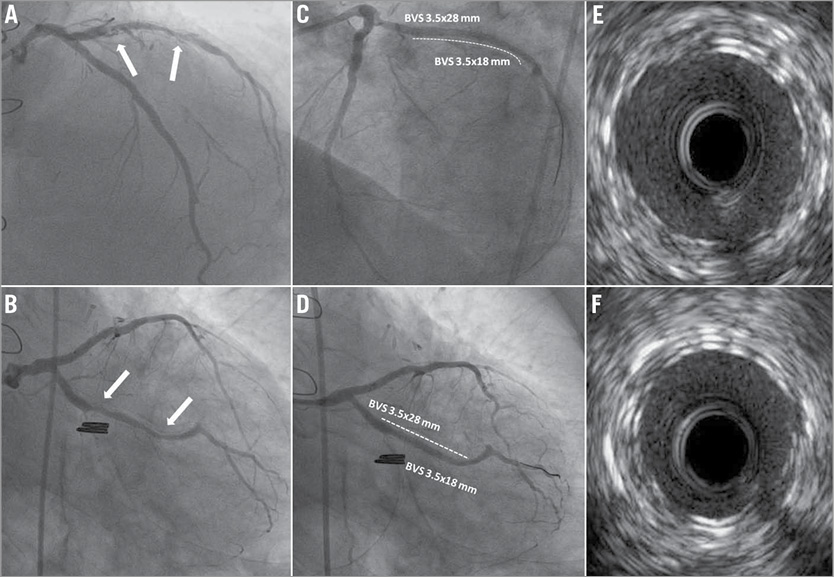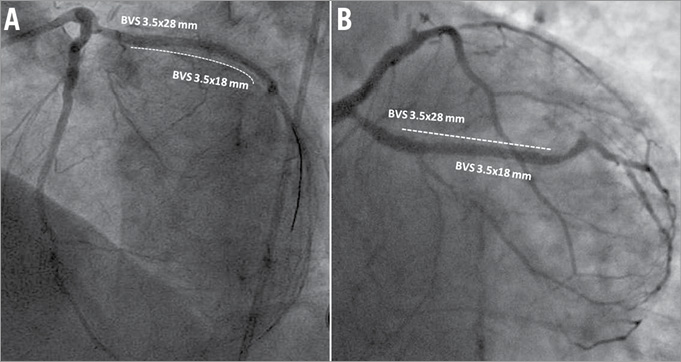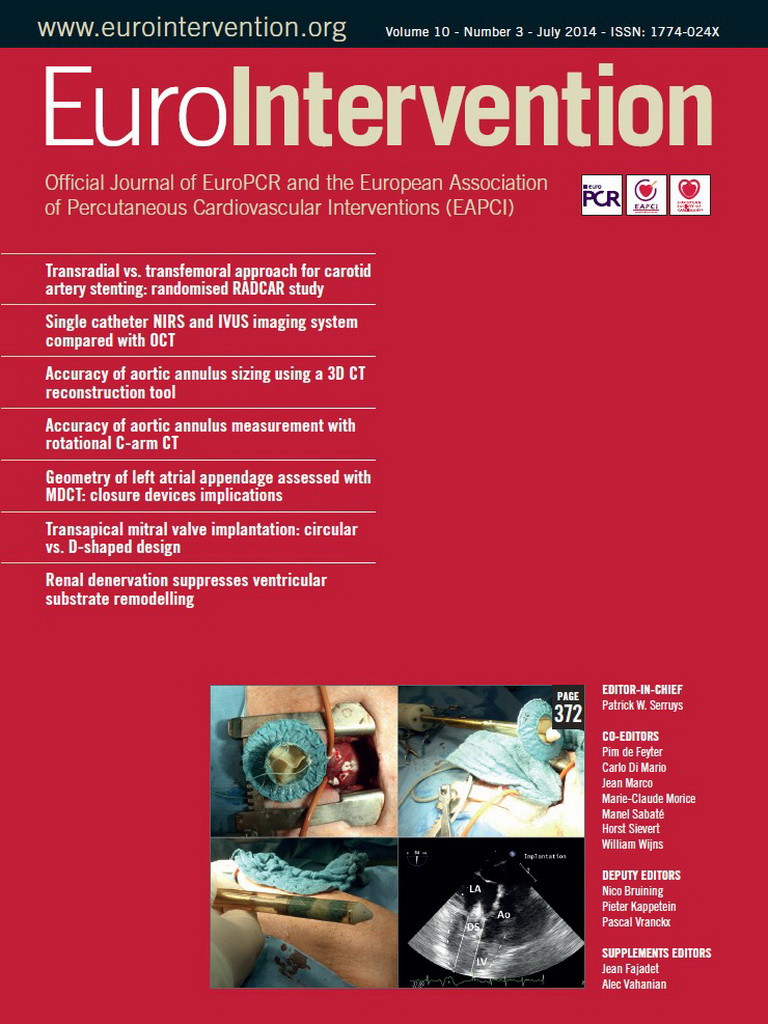An 80-year-old male underwent coronary angiography for unstable angina. He had a history of multiple PCI in the LCx towards OM1 due to recurrent in-stent restenosis (ISR) (bare metal stent-ISR treated with drug-eluting stent [DES]; DES-ISR treated with cutting and non-compliant [NC] balloons; new DES-ISR treated with drug-eluting balloon). The angiography showed a recalcitrant multifocal ISR on OM1 (Figure 1A, Figure 1B). Although off-label, we treated the ISR with two (3.5×18 mm and 3.5×28 mm) bioresorbable vascular scaffolds (BVS; Absorb™; Abbott Vascular, Santa Clara, CA, USA) implanted in overlap from distal to proximal OM1. Post-dilatation was performed with a 3.5×21 mm NC balloon. Final angiographic (Figure 1C, Figure 1D) and IVUS (Figure 1E, Figure 1F) results were good as well as six-month angiographic follow-up (Online Figure 1A, Online Figure 1B). These images show that BVS may be an option in case of recalcitrant ISR after failure of the conventional treatment.

Figure 1. A) & B) Restenosis in the distal and proximal OM1 at baseline angiography. Final angiographic (C & D) and IVUS results at the proximal (E) and distal (F) ISR sites following in-stent BVS implantation.
Conflict of interest statement
The authors have no conflicts of interest to declare.

Online Figure 1. A) & B) Six-month angiographic follow-up showing patency of the OM1 segment treated with in-stent BVS implantation.
Moving image 1. Pre-PCI IVUS pullback from the distal to proximal OM1 showing multiple strut layers and multifocal ISR.
Moving image 2. Final IVUS pullback following BVS implantation from distal to proximal OM1.

